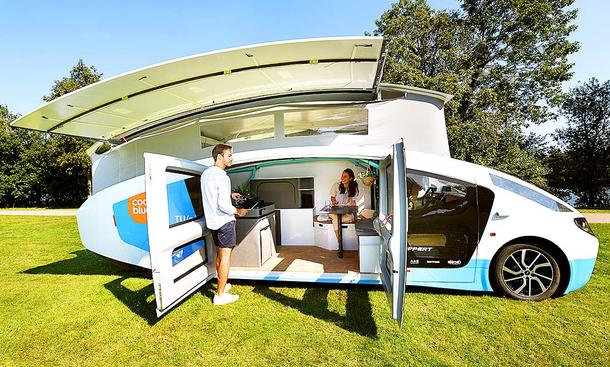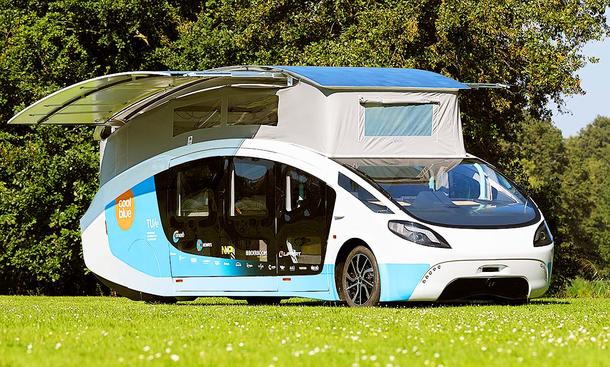With the Stella Vita, students of the Eindhoven University of Technology present a vision of the motorhome of the future – purely electric and charged with solar energy with a range of up to 730 kilometers. Even if the “Solar Team Eindhoven” camper is only one of a kind, it shows what is already possible with the current state of the art.


Stella Vita Features
While one electric car premiere chases the next, battery-powered motorhomes have remained conspicuously silent so far. With the Stella Vita, however, students from the Netherlands show that it is entirely possible to electrify recreational vehicles. The special thing about the vita of the “Solar Team Eindhoven” is – as the name of the team of 22 students already suggests – the drive through solar power.
For this purpose, solar panels are housed on the roof of the camper on an area of a maximum of 17.5 square meters (fully unfolded, only when standing), which provide the electricity for driving and living.
While driving, charging via the photovoltaic system is also possible, but then only on eight square meters of folded panel area. The electricity is stored in a 60 kWh battery and is sufficient for a journey of up to 600 kilometers at up to 120 km / h. On sunny days, the range of the electric camper can even be up to 730 kilometers. If you want to live self-sufficiently, you should plan at least two to three days for the charging process with solar energy – however, conventional charging stations can also be controlled with the Stella Vita and shorten the charging time.
STELLA VITA: SELF-SUFFICIENT CAMPING THANKS TO A SOLAR ROOF
In order to use as little energy as possible when driving, the Stella Vita is designed as streamlined as possible. This includes the flat silhouette with a sloping roofline, which is unusually flat for a motorhome. The almost seven meter long camper van is only 1.83 meters high. A pop-top roof provides the necessary space in the stand. Nothing is missing on board. Even a compact shower is planned in the “self-sustaining house on wheels” – the self-sufficient house on wheels – as well as a fully-fledged kitchen and modern infotainment with constant energy monitoring.
The curb weight of the solar camper, including the comfort features, is just 1.7 tonnes thanks to the consistent lightweight construction. The students of the TU Eindhoven proved with a trip from the Netherlands to Tarifa in southern Spain, that the study vehicle can drive with pure solar energy.
A market readiness is not planned for the time being. With the Stella Vita, the students primarily want to prove how solar energy can also be used in vehicle operation and provide food for thought for the industry. There is therefore no price for self-catering either.

